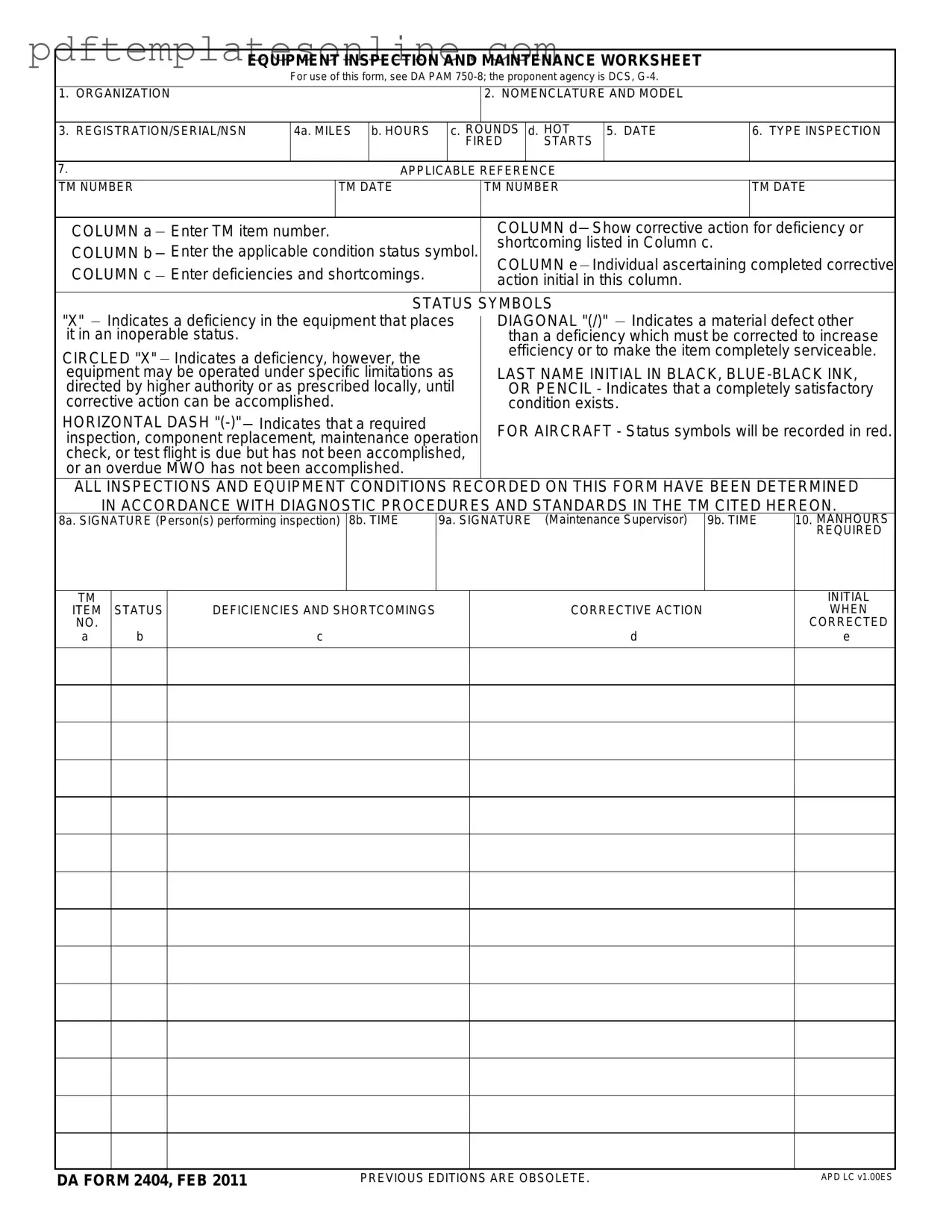Filling out the DA 5988 E form is crucial for maintaining accurate records of equipment inspection and maintenance. However, many individuals make common mistakes that can lead to confusion and inefficiencies. Here are seven frequent errors to avoid.
One of the most significant mistakes is failing to provide complete information in the required fields. Each section of the form, from the organization name to the equipment's registration number, must be filled out thoroughly. Incomplete entries can result in delays in processing and may lead to miscommunication regarding the equipment's status.
Another common error is using incorrect ink or pencil for signatures. The instructions clearly state that signatures should be in black, blue-black ink, or pencil. Using other colors can create issues with legibility and may not be accepted by reviewing authorities, potentially causing delays in the approval process.
Many people also overlook the importance of accurately entering deficiencies and shortcomings in Column c. This section is critical for identifying issues with the equipment. Failing to specify these problems can lead to inadequate maintenance and unresolved operational challenges, which may affect overall equipment performance.
Additionally, neglecting to record the corrective actions taken in Column d is a frequent oversight. This column serves as a record of what has been done to address the identified deficiencies. Without this information, it becomes difficult to track the history of maintenance and repairs, which can complicate future inspections.
Another mistake involves not initialing the corrective actions in Column e. The person who verifies that the corrective actions have been completed must provide their initials. Failing to do so can raise questions about whether the necessary steps were taken, leading to potential accountability issues.
Furthermore, missing the signature and time entries for both the person performing the inspection and the maintenance supervisor can cause significant problems. These signatures serve as a verification of the information provided and ensure that accountability is maintained throughout the inspection process. Without them, the validity of the form may be questioned.
Lastly, not adhering to the status symbols outlined in the form can lead to misinterpretation of the equipment's condition. Each symbol has specific meanings that must be understood and applied correctly. Misusing these symbols can result in equipment being deemed operational when it is not, posing safety risks and operational challenges.
By being aware of these common mistakes and taking steps to avoid them, individuals can ensure that the DA 5988 E form is filled out accurately and efficiently, ultimately leading to better equipment management and safety.
